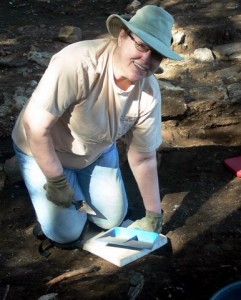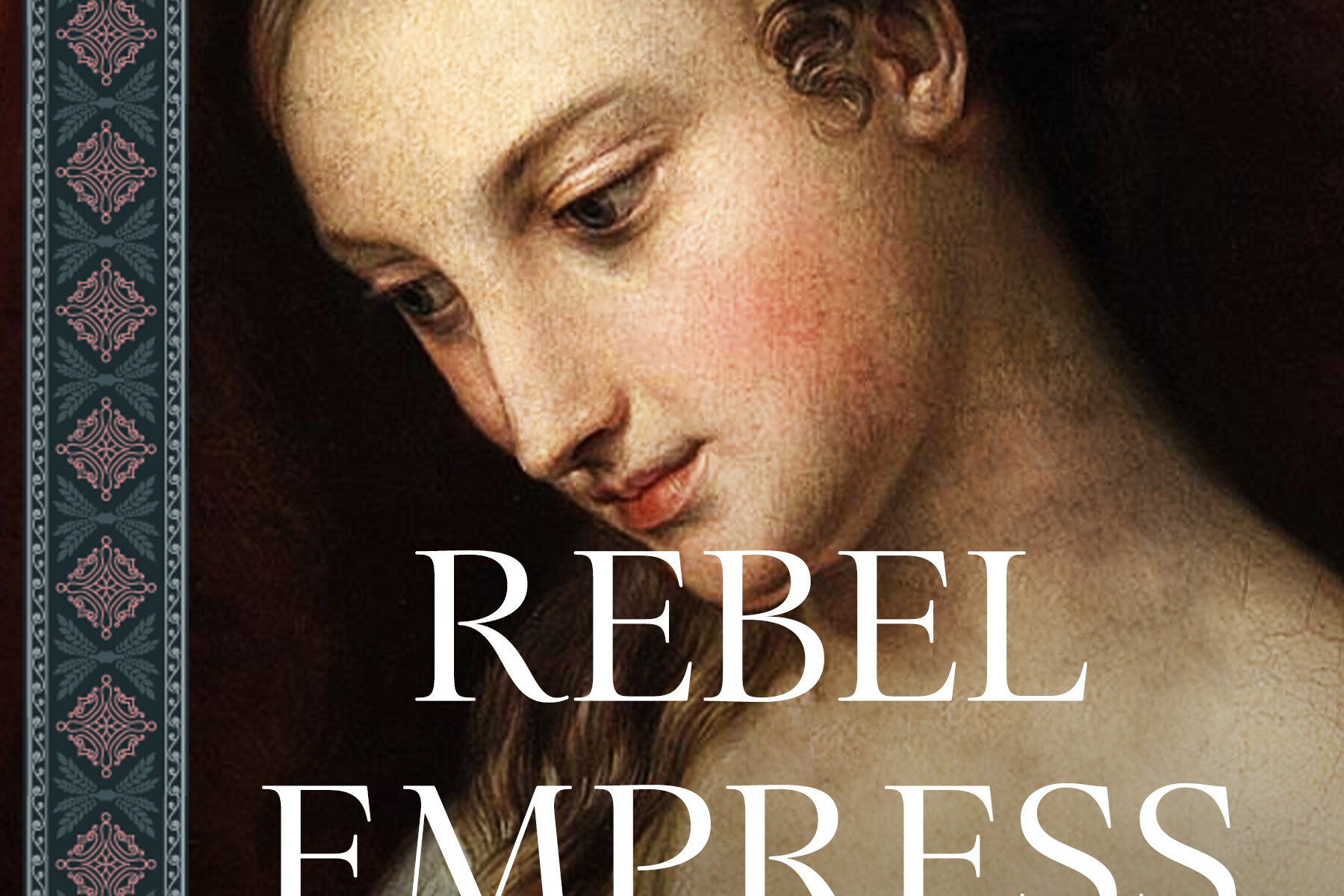Faith,
Thank you for introducing my readers and friends to these iconic women rulers who populate your novels. Let me say straight out that the longer I know you, now nine happy years, the more my admiration grows: for your writing, your passion for your chosen period, your publishing ventures with your own Raggedy Moon Books and Space & Time Books imprints, your stamina and technology savvy, which you generously share with us at HNS-NYC.
When did you discover your affinity for the fifth century and earlier?
First, I want to thank you, Loretta, for letting me share my passions for this time period and these characters with your readers. I’ve always been a history buff and went through different phases over my life: ancient civilizations, English Plantagenet and Tudor eras, American Revolution and Civil War, etc. I would read everything I could get my hands on until I was sated and another shiny object crossed my path and diverted my attention. I was always fascinated by the role women played across history and how little historians seemed to value their contributions.

In 1980, a Chicago art exhibit led me to fifth century Rome: Judy Chicago’s groundbreaking “The Dinner Party” where Hypatia, the Lady Philosopher of Alexandria, had a “plate. I bought the accompanying book with short biographies of each of the women featured in the exhibit and was captured by the inherent drama of Hypatia’s life and death. During the next seventeen years, I haunted libraries, bookstores, and the internet looking for more material to fill out the sketchy and conflicting details available about Hypatia’s life. I eventually brought her story to life in my first novel Selene of Alexandria.
https://www.brooklynmuseum.org/exhibitions/dinner_party
When did you first hear the words Theodosian women?
As far as I know, I coined that phrase. During my Hypatia research, I keep running across these other powerful women who ruled the Roman Empire during this time: Placidia, Theodosius’ daughter; Pulcheria, his granddaughter; and Athenais, wife to his grandson. They each had compelling human stories. Athenais, the beautiful but impoverished daughter of a pagan Athenian scholar, captured the heart of a Most Christian Emperor. A poet, her extant work is the largest by a female from ancient times, even outpacing the more famous Sappho. At the tender age of fifteen, Pulcheria outwitted the Constantinople court worthies to claim sole regency over her emperor brother and the empire. Placidia ruled for her minor son and held the crumbling Western empire together against the depredations of the invading barbarians. In all my previous reading, I had never run across these women and felt compelled to bring their stories to a wider audience.
Fourteen Theodosian women lived over six generations, but I don’t have time to write all of their stories. Instead, I provided blog posts featuring each woman on my website. For those readers who wish more information you can find the first post on Theodosius’ wife, Aelia Flacilla here.
https://faithljustice.com/aelia-flacilla/
You have written about Placidia in Twilight Empress and Becoming Twilight Empress, Pulcheria in Dawn Empress, and now Athenais in Rebel Empress. They are all strong-minded, visionary, tough women who endured danger, constant challenges and periods of humiliation, yet survived. But they were very different people. How would you characterize each one, in a sentence each?
Placidia: A warrior queen who spent her life directing armies, fighting off barbarian incursions, and holding the Western Roman Empire together during its twilight years.
Pulcheria: A fanatical Christian and consummate politician who spent her life protecting her brother’s reign, melding Church and State, and laying the foundation for the dawn of the Byzantine Empire
Athenais: An introverted writer and homebody forced to rebel in order to save her marriage, her literary legacy, and the people of Jerusalem.
Despite their elevated status, it was a man’s world. How differently did they manage the dominant men around them?
Placidia earned the love and respect of the men in her life through her intelligence and force of personality. Her actions spoke much louder than words as she endured hardships with and for her people. She dealt fairly with both enemies and friends. Placidia inspired deep love from her husbands and son, fanatical loyalty from her Gothic troops, and respect from most generals, the exception being General Aetius. Their feud likely contributed to the fall of the Western empire.
Pulcheria had a much more direct source of power. She raised and protected her younger brother, Theodosius II. They were extremely close having shared a traumatic childhood. Every man knew if they wanted the emperor’s ear, they had to go through Pulcheria. Overtime she built alternative bases of power with key generals and churchmen based on her wise governance and good works with the people.
Early on, Athenais wielded “soft power.” Her beauty dazzled many men, but they stayed for her kindness and keenness of wit. She inspired them to protect her. She eventually learned sterner lessons from Placidia and Pulcheria. Athenais grew into and learned to use the power inherent in her position as empress and the love of the people she cultivated in her exile in Jerusalem to defy her husband and the Orthodox Church.
Have you been on archeological digs near where your character’s lived? What does it feel like to touch an artifact close to them?
The closest I’ve come is working on a second century Roman villa in Tuscany, so not so close. However I have done site visits in Rome, Ravenna, and Constantinople (modern Istanbul) and visited fifth century buildings and artifacts in situ. It is thrilling to walk the Theodosian Wall and know that my characters trod the same path or cheered the charioteers from the site of the hippodrome. I was in awe when I visited Galla Placidia’s Mausoleum in Ravenna and could run my hand over the sarcophagus that supposedly housed her remains. Which made it all the more disappointing when I found out the coffin was dated to a much later time and Placidia had been buried in Rome. I consoled myself with the thought that she had most likely often visited the stunning chapel. And I do cherish a tiny bronze coin from that time with her name on it that my sweet husband bought for me.

We know that Placidia, Pulcheria and Athenais were educated and accomplished. They didn’t live in a vacuum. What about the women who served them on a daily basis?
The women in their retinues would have been noble women of similar background. Placidia and Athenais would have had wives and daughters of senators and other important men in government, placed there to help their men’s careers. I’m assuming they would have had some charm and education or else they would be dismissed. Pulcheria went against the grain by keeping a retinue of pledged virgins and holy women from all walks of life.
This was a time of rampant slavery, so the actual palace servants would have been chosen for their skills and talents: tutors, cooks, hair dressers, chamber maids, etc., all slaves overseen by the head eunuch in charge of the imperial household. It is unlikely that my characters would have had much of a personal relationship with these servants. However, I’m a fiction writer, so I invented two free servants that were close to my protagonists. Lucilla, a young girl Placidia saved from the sack of Rome became her closest companion throughout her story. Athenais was tenderly cared for by Dorothea, a young woman educated in an orphanage founded by Pulcheria.
What are your preferred sources for the factual history of your empresses?
I consulted dozens of books and hundreds of articles, but relied most heavily on the research of Kenneth G. Holum from his Theodosian Empresses: Women and Imperial Dominion in Late Antiquity for all three of my characters. More specific to each of my protagonists, I used In Her Own Words: The Life and Poetry of Aelia Eudocia (Athenais’ baptismal and imperial name) by Brian P. Sowers, The Life and Times of the Empress Pulcheria AD 399 to AD 452 by Ada B. Teetgen and Galla Placidia Augusta: A Biographical Essay by Stewart Irvin Oost. I’ve posted bibliographies on my website for those interested in a more extensive list.
What will you be working on next.
I had thought to write a couple of novellas featuring Placidia’s and Athenais’ daughters, but think I want a break from the fifth century. I have a sequel to my first century novel Sword of the Gladiatrix languishing on my computer—several chapters and an outline—that has been calling to me lately. I also have a second Adventurous Girls series middle-grade historical fiction story almost ready and ideas for a couple more. So many possible books, so little time!
Faith, thank you for your time. Here are the buy links and Faith’s informative website.
Website: https://faithljustice.com/
Rebel Empress: https://www.amazon.com/dp/B0DD1MCT8B
The Theodosian Women series: https://www.amazon.com/dp/B09QFLHD6K
Bio:
Faith L. Justice writes award-winning fiction and articles in Brooklyn, New York. Her work appears in such publications as Salon.com, Writer’s Digest, and The Copperfield Review. She is past Chair of the Historical Novel Society–New York City Chapter and is Associate Editor for Space and Time Magazine. Her novels, collections of short stories, and non-fiction are available in all formats at all the usual places or through your local library. For fun, Faith likes to dig in the dirt— her garden and various archaeological sites. Sample her work, check out her blog, or ask her a question at her website: fa

